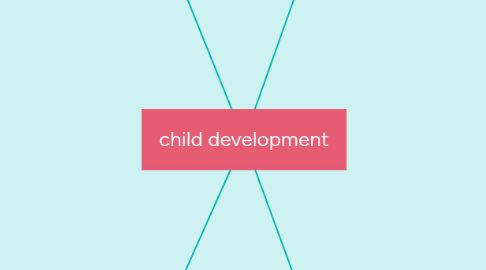
1. Language and literacy
1.1. 0-18 months (Infants)
1.1.1. 1. Crying,cooing, listening, soothed by response.
1.1.2. 2. Beginning of babbling
1.1.3. 3. Understand the meaning "dada" and "mama"
1.2. 18-36 months (Toddlers)
1.2.1. 1. Vocabulary grows very quickly.
1.2.2. 2. Two words combination for ex: daddy go, want milk
1.2.3. 3. Producing questions and statements.
1.3. 3-5 years (Preschoolers)
1.3.1. 1. Ask how and why questions.
1.3.2. 2. Using more complex sentaces
1.3.3. 3. Know and able to tell their first and last name and family names.
1.4. 6-9 years (School aged children)
1.4.1. 1. They have knowledge of words and meaning(Semantic).
1.4.2. 2. The use of clauses and word endings in this age( Syntax).
1.4.3. 3. Increase communication skills by using form language.
1.5. 10-12 years (Preadolescence)
1.5.1. 1. Improvement in literacy skills for ex: read a whole book
1.5.2. 2. Remember 8000-14000 words.
1.5.3. 3. Understanding of different meanings of one word.
2. cognitive
2.1. 0-18 months (Infants)-Sensorimotor
2.1.1. 1. Infants perform simple, involuntary reflexes like starring.
2.1.2. 2. Engage in circular actions with their bodies.
2.1.3. 3. They have no understanding of cause and effect.
2.2. 18-36 months (Toddlers)-preoperational
2.2.1. 1. They can solve problems using mental images.
2.2.2. 2. Imitate the behaviors of others.
2.2.3. 3. Recognize the shapes and colors of objects.
2.3. 3-5 years (Preschoolers)- Preoperational
2.3.1. 1. Increase the knowing and remembering process like words- guess, remember, forget etc.
2.3.2. 2, Develop short and long term memory
2.3.3. 3. Create logic and reasoning behind concepts
2.4. 6-9 years ( School aged children)
2.4.1. 2. Increase problem solving approach
2.4.2. 3. Ability to ask questions about existence.
2.5. 10-12 years ( Preadolescence)
2.5.1. 1. Knowledge of own competence, motivation, emotions and tempraments.
2.5.2. 2. Ability to perceive and create music.
3. Physical and motor
3.1. 0-18 months (Infants)
3.1.1. 1,Raises chest up off the floor or bed
3.1.2. 2. Bats at objects; cannot exactly grasp them.
3.1.3. 3. Stands up holding onto furniture.
3.2. 18-36 months (Toddlers)
3.2.1. 1. Coordination in walking and running
3.2.2. 2. Walks down stairs with both feet on each step.
3.3. 3-5 years ( Preschoolers)
3.3.1. 1. Stop, start and change directions quickly when running.
3.3.2. 2. Throw balls and other objects using the whole body.
3.3.3. 3. Swing on a swing independently.
3.4. 6-9 years ( School aged children)
3.4.1. 1. Catch a small ball using hands only.
3.4.2. 2. Balance on one foot without vision.
3.4.3. 3. Run between 14-18 feet per second.
3.5. 10-12 years ( Preadolescence)
3.5.1. 1. Increased coordination arms, shoulders and legs.
3.5.2. 2. Better eye-hand coordination.
4. Socio-emotional
4.1. 0-18 months (Infants)
4.1.1. 1. like the company of primary caregiver.
4.1.2. 2. Cry when parents leave.
4.2. 18-36 months (Toddlers)
4.2.1. 1. likes to do tasks without help.
4.2.2. 2. Shows concern for others like sharing, caring etc.
4.2.3. 3. likes to play alone for short time.
4.3. 3-5 years (Preschoolers)
4.3.1. 1.They can interpret their own emotions.
4.3.2. 2. Recognize the different emotions expressed by others.
4.4. 6-9 years ( School aged children)
4.4.1. 1. Increased social understanding like compromising and give in; in a relationship.
4.4.2. 2. Able to solve problems
4.5. 10-12 years (Preadolescence)
4.5.1. 1. More emotional during choosing close friends.
4.5.2. 2. Engage more in competition among peers.

